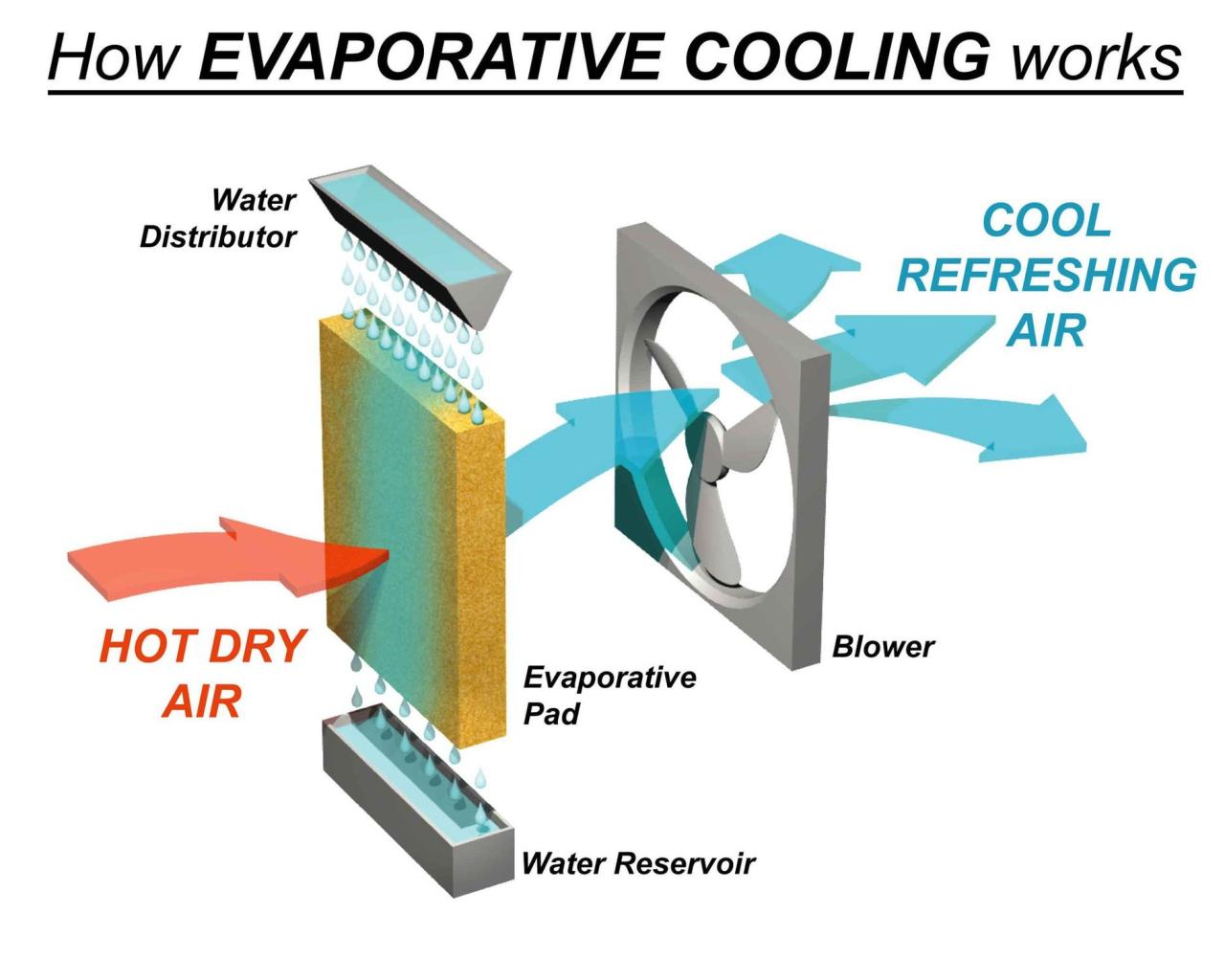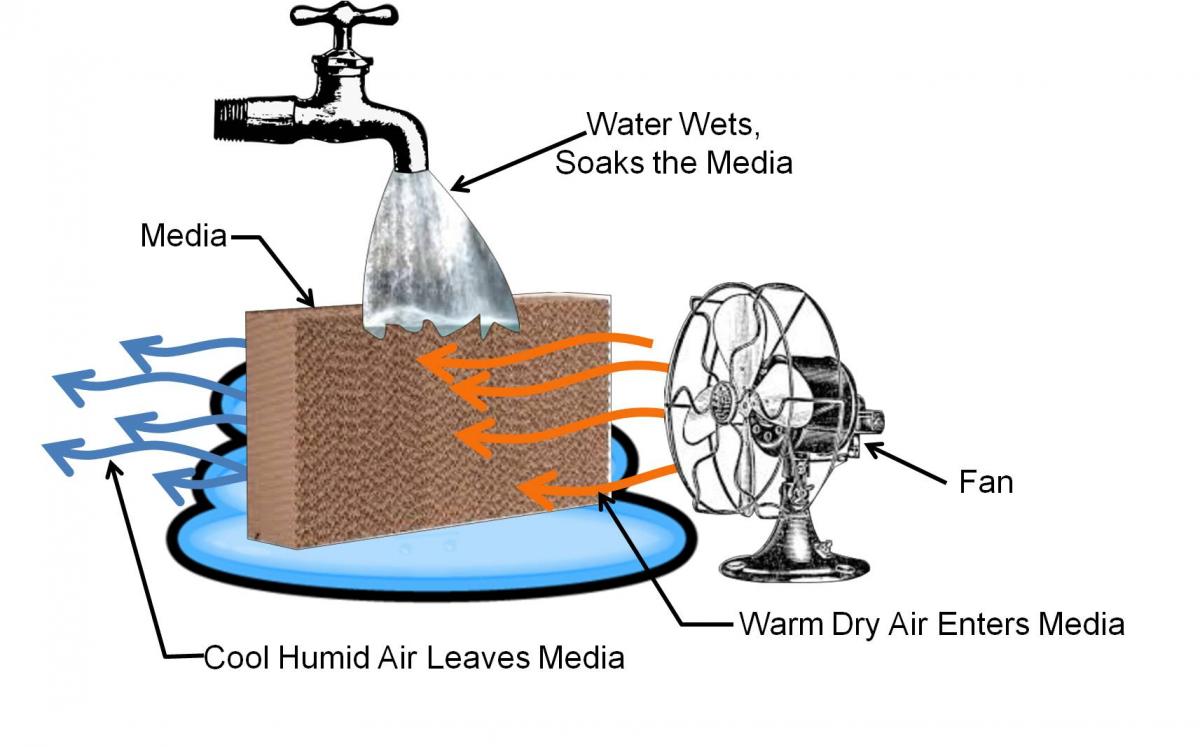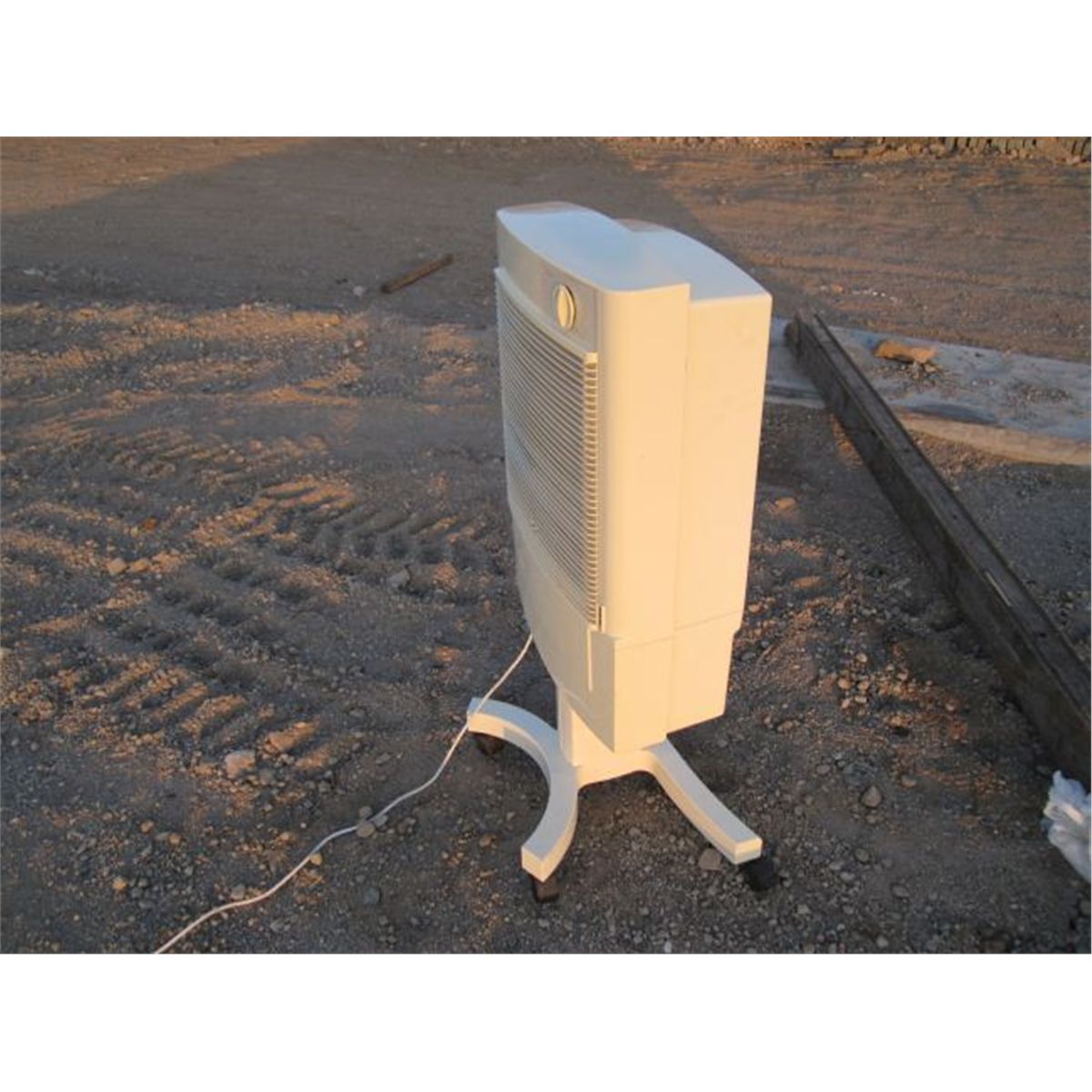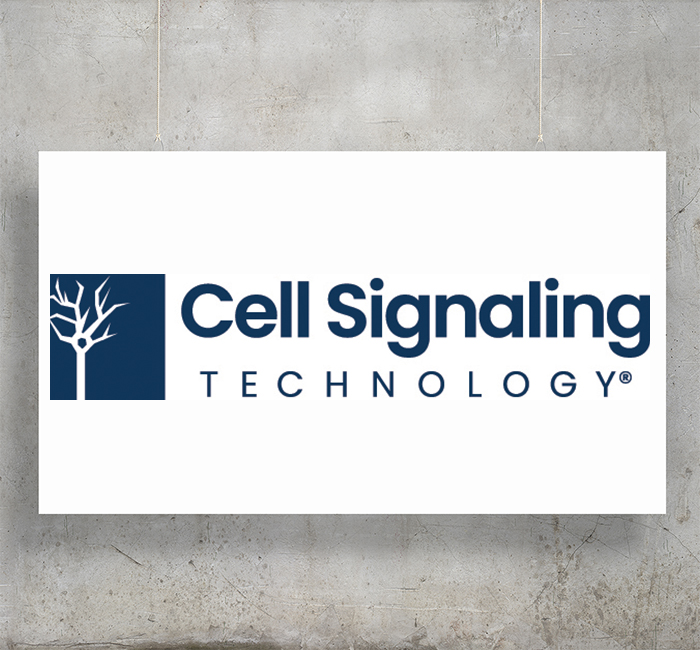Climate Technologies: Evaporative Coolers for a Sustainable Future
Climate technologies evaporative coolers offer a refreshing approach to staying cool while minimizing environmental impact. These systems, unlike traditional air conditioners, use the natural process of evaporation to lower temperatures, […]

Climate technologies evaporative coolers offer a refreshing approach to staying cool while minimizing environmental impact. These systems, unlike traditional air conditioners, use the natural process of evaporation to lower temperatures, providing a sustainable and energy-efficient alternative for homes, businesses, and industries. Evaporative coolers work by drawing in hot, dry air and passing it over a wet filter. As the water evaporates, it absorbs heat from the air, resulting in a cooler breeze. This simple yet effective process makes evaporative cooling a viable option for regions with dry climates, where humidity levels are low.
The technology behind evaporative coolers has been around for centuries, but recent advancements have made them more efficient and effective. These advancements include the use of high-efficiency pumps, water-saving designs, and innovative materials. Evaporative coolers are also becoming increasingly popular due to their environmental benefits. They use less energy than traditional air conditioners, reducing greenhouse gas emissions and saving money on energy bills. Additionally, they rely on water, a renewable resource, making them a more sustainable choice.
Introduction to Evaporative Cooling

Evaporative cooling, also known as swamp cooling, is a method of cooling air using the natural process of evaporation. It works by using water to absorb heat from the air, which then evaporates and cools the surrounding environment.
Evaporative cooling is a cost-effective and energy-efficient alternative to traditional air conditioning systems, particularly in hot, dry climates.
How Evaporative Cooling Works
Evaporative cooling systems work by passing air over a wet medium, typically a pad made of cellulose or other materials. As the air passes over the wet pad, water evaporates and absorbs heat from the air. This process cools the air and reduces its temperature. The cooled air is then circulated throughout the space.
Advantages of Evaporative Cooling
- Energy Efficiency: Evaporative coolers use significantly less energy than traditional air conditioners. They rely on the natural process of evaporation, which requires minimal energy input.
- Cost-Effectiveness: Evaporative coolers are generally less expensive to purchase and operate than air conditioners. They have lower upfront costs and consume less electricity.
- Environmentally Friendly: Evaporative cooling systems are a more environmentally friendly option as they do not use refrigerants that contribute to ozone depletion or global warming.
- Improved Air Quality: Evaporative coolers can help improve air quality by adding moisture to the air, which can be beneficial in dry climates.
Disadvantages of Evaporative Cooling
- Limited Cooling Capacity: Evaporative cooling is most effective in hot, dry climates. It is not as effective in humid climates where the air is already saturated with moisture.
- Moisture Increase: Evaporative cooling systems increase the humidity in the air, which can be uncomfortable for some people. This can also be a concern in areas with high humidity levels.
- Maintenance Requirements: Evaporative coolers require regular maintenance, such as cleaning the pads and refilling the water reservoir. This can be a time-consuming task, but it is essential for ensuring optimal performance.
- Limited Applications: Evaporative cooling is not suitable for all environments. It is best suited for spaces with good ventilation and dry climates.
Climate Technologies and Evaporative Coolers
In the face of rising global temperatures and increasing energy demands, climate technologies play a crucial role in mitigating climate change and fostering sustainable practices. Evaporative cooling, a time-tested and efficient cooling method, has emerged as a valuable component of this technological landscape, offering a compelling solution for addressing climate challenges.
Energy Efficiency and Sustainability
Evaporative coolers are renowned for their energy efficiency, significantly reducing energy consumption compared to traditional air conditioners. They utilize the natural process of evaporation to cool air, relying on water and a fan to create a refreshing breeze. This reliance on natural processes minimizes the need for electricity, contributing to lower greenhouse gas emissions and a lighter environmental footprint.
- Reduced Energy Consumption: Evaporative coolers use less energy than traditional air conditioners, resulting in lower electricity bills and reduced carbon footprint.
- Renewable Energy Compatibility: Evaporative cooling systems are compatible with renewable energy sources, such as solar power, further enhancing their sustainability.
- Water Conservation: Modern evaporative coolers employ efficient water management systems, minimizing water usage and promoting responsible water resource management.
Climate Technologies Integrating Evaporative Cooling, Climate technologies evaporative cooler
Evaporative cooling technology is being integrated into various climate technologies, enhancing their performance and sustainability. Here are some notable examples:
- Green Buildings: Evaporative cooling systems are increasingly incorporated into green building designs, providing a natural and energy-efficient cooling solution that complements sustainable building practices.
- Hybrid Cooling Systems: Integrating evaporative cooling with traditional air conditioning systems creates hybrid cooling solutions that leverage the benefits of both technologies, optimizing energy efficiency and reducing reliance on fossil fuels.
- Passive Cooling: Evaporative cooling plays a crucial role in passive cooling strategies, utilizing natural ventilation and shading to minimize reliance on mechanical cooling systems.
Types of Evaporative Coolers: Climate Technologies Evaporative Cooler
Evaporative coolers, also known as swamp coolers, are a type of cooling system that uses the process of evaporation to cool air. They are a popular choice for homes and businesses in hot, dry climates. Evaporative coolers are generally more energy-efficient than traditional air conditioners, making them an environmentally friendly and cost-effective option.
Types of Evaporative Coolers
Evaporative coolers can be broadly classified into three main types:
- Direct Evaporative Coolers: These coolers work by directly passing air through a wet pad, allowing the water to evaporate and cool the air. They are typically the most affordable and energy-efficient option.
- Indirect Evaporative Coolers: These coolers use a separate heat exchanger to cool the air before it is passed through a wet pad. This results in a cooler and more humid air stream, making them suitable for environments with high humidity.
- Hybrid Evaporative Coolers: These coolers combine the features of direct and indirect evaporative cooling systems. They typically use a direct evaporative cooler to pre-cool the air before it is passed through an indirect evaporative cooler, resulting in a highly efficient cooling system.
Swamp Coolers
Swamp coolers, also known as direct evaporative coolers, are the most common type of evaporative cooler. They work by passing air through a wet pad, allowing the water to evaporate and cool the air. The air is then circulated throughout the space, providing a cooling effect.
- How Swamp Coolers Work: Swamp coolers use a simple and effective principle: evaporation. When water evaporates, it absorbs heat from its surroundings, cooling the air. In a swamp cooler, air is drawn through a wet pad, typically made of cellulose or other absorbent material. As the air passes through the pad, water evaporates, absorbing heat from the air and lowering its temperature. The cooled air is then blown into the space, providing a cooling effect.
- Advantages of Swamp Coolers: Swamp coolers offer several advantages, including:
- Energy Efficiency: Swamp coolers are highly energy-efficient, using significantly less energy than traditional air conditioners. This translates to lower operating costs and a reduced environmental impact.
- Cost-Effective: Swamp coolers are generally less expensive to purchase and install than traditional air conditioners.
- Natural Cooling: Swamp coolers utilize a natural process, evaporation, to cool the air, making them a more natural and environmentally friendly option.
- Disadvantages of Swamp Coolers: Swamp coolers also have some drawbacks, including:
- Limited Effectiveness in Humid Climates: Swamp coolers are less effective in humid climates, as the air is already saturated with moisture, reducing the rate of evaporation.
- Increased Humidity: Swamp coolers can increase the humidity levels in a space, which may be undesirable for some people.
- Water Consumption: Swamp coolers require a constant supply of water, which can be a concern in areas with water scarcity.
Desert Coolers
Desert coolers, also known as evaporative air conditioners, are a type of direct evaporative cooler designed for hot, dry climates. They are similar to swamp coolers in their operation but are typically more powerful and efficient.
- Key Features of Desert Coolers: Desert coolers typically feature:
- Larger Fan Motors: Desert coolers have larger and more powerful fan motors, enabling them to circulate larger volumes of air, providing a more powerful cooling effect.
- Higher Water Flow Rates: Desert coolers have higher water flow rates, ensuring a constant supply of water to the evaporative pad, maximizing cooling efficiency.
- Durable Construction: Desert coolers are typically built with durable materials, designed to withstand harsh desert conditions.
- Performance and Efficiency: Desert coolers are designed to provide a significant cooling effect in hot, dry climates. They can lower air temperatures by 15-20 degrees Fahrenheit, making them a highly effective cooling solution. Their high efficiency and low energy consumption make them an attractive alternative to traditional air conditioners in desert environments.
Comparison of Evaporative Cooler Models
The performance and efficiency of different evaporative cooler models can vary significantly. Factors that influence the performance of an evaporative cooler include:
- Fan Motor Size and Power: A larger and more powerful fan motor can circulate more air, providing a stronger cooling effect.
- Evaporative Pad Size and Material: A larger evaporative pad with a higher water absorption capacity can cool more air. The material of the evaporative pad also plays a role in its efficiency.
- Water Flow Rate: A higher water flow rate ensures a constant supply of water to the evaporative pad, maximizing cooling efficiency.
- Airflow Design: The design of the air intake and outlet can affect the airflow pattern and cooling efficiency.
- Energy Efficiency Rating: The energy efficiency rating of an evaporative cooler indicates its energy consumption. Higher energy efficiency ratings translate to lower operating costs.
Concluding Remarks

As we navigate the challenges of climate change, finding sustainable solutions is paramount. Evaporative cooling technology presents a compelling alternative to traditional air conditioning, offering a refreshing approach to temperature management while minimizing environmental impact. With advancements in efficiency and water conservation, evaporative coolers are poised to play an increasingly significant role in our future, creating a more sustainable and comfortable environment for all.
Climate technologies like evaporative coolers offer a sustainable and energy-efficient way to combat rising temperatures. While these systems rely on water evaporation for cooling, the innovative advancements in genius laser technology are also finding applications in the realm of climate control.
For instance, lasers are being explored for their potential to enhance the efficiency of evaporative cooling systems, leading to even greater energy savings and environmental benefits.





